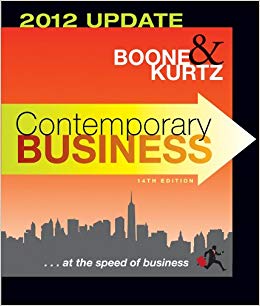1. Do you think Macedonias strategy of focusing on flexibility, quality, and proximity rather than trying to...
Question:
1. Do you think Macedonia’s strategy of focusing on flexibility, quality, and proximity rather than trying to compete with the high-volume, lowprice strategy of its rivals will be successful in the long run? Why or why not?
2. How might Macedonian apparel manufacturers attract U.S. buyers?
If you have to look twice on a map to find the Republic of Macedonia, you’re probably not alone. But the small country with a population of about 2 million, nestled in the heart of eastern Europe (sharing borders with Bulgaria, Serbia, Kosovo, Albania, and Greece), is becoming a hotbed of apparel manufacturing. Although textiles and clothing already make up one of the largest industries in this country, Macedonian manufacturers are pushing for more, claiming that their factories are working at only half their capacity.
Currently, Macedonian factories are equipped to fulfill cut-make and cut-make-trim orders, but the goal is to offer full-package production, including design and domestic fabric procurement. “We need customers to move their design and product development here, so we become their partners in production, offering a fast, flexible approach and something cheaper than the client is used to,” says Vladimir Icokaev, a manager at textile and clothing exporter Global Plus.
Macedonian factories already supply major European brands and retailers with everything from jackets and coats to skirts, pants, and shirts. The 500 textile and clothing firms in Macedonia are generally small by international standards—most employ from 30 to 500 workers. However, what they can’t provide in volume they can offer in flexibility. Competitors from countries as nearby as Bulgaria and as far away as China and India are focusing on mass production, offering high volume at the lowest cost. Macedonian manufacturers, on the other hand, prefer to focus on short production runs and high quality. “If buyers want capacity they can get it anywhere in the world,” says Ilijev Nikolco, general manager for manufacturer INT, which provides a range of services from design through finished garments. “The future for Macedonia is exclusively in higher quality, more complicated styles and lower lead times.”
Unlike the competitive environment found in other countries, many of the small manufacturers in Macedonia work together to serve the same customers. “The appeal for buyers and retailers is that they can deal with one factory that has a network to put garments out to individual suppliers—a one-stop shop,” notes Gabriela Pavloska, export manager at Okitex, a women’s wear company that is headquartered in Germany. Okitex actually works with 20 factories in Macedonia to produce a complete collection of women’s items—coats, blazers, blouses, and the like. “Our idea is to combine factories to provide a source because a client doesn’t just want one type of garment,” explains Pavloska.
Location is another factor that works in Macedonia’s favor, particularly with its European customers. Delivery to the United Kingdom takes about three days, to Germany about two days. In addition, Macedonia is located near the high-end fabric producers in Turkey and Italy. So the average lead time from receipt of fabric to delivery of a product is around three weeks. The small, flexible Macedonian factories can easily produce minimum orders of just 100 pieces per style and color—and have them at a customer’s doorstep anywhere in western Europe in less than a month.
Macedonia still has some obstacles to overcome. Workers do not always have the necessary technical skills, and Macedonia is not yet a member of the European Union. But some factories are sending workers to Germany and other countries for training, and the country recently held an international business event sponsored by USAID (the U.S. Agency for International Development) and the Macedonian Competitiveness Project. During the event, a group of 29 manufacturers showcased their capabilities to buyers that included such popular European brands as Topshop, Monsoon, Whistles, and BMB Clothing. Buyers were surprised—and impressed—by the facilities, the quality, the flexibility, and the easy location of Macedonian manufacturers. “It really is a brilliant way to meet a new manufacturing partner,” said Leonie Barrie, an industry expert. So the next time you buy an item of clothing, check the label—it might read, “Made in Macedonia.”
Step by Step Answer:

Contemporary business 2012 update
ISBN: 978-1118010303
14th edition
Authors: Louis E. Boone, David L. Kurtz





